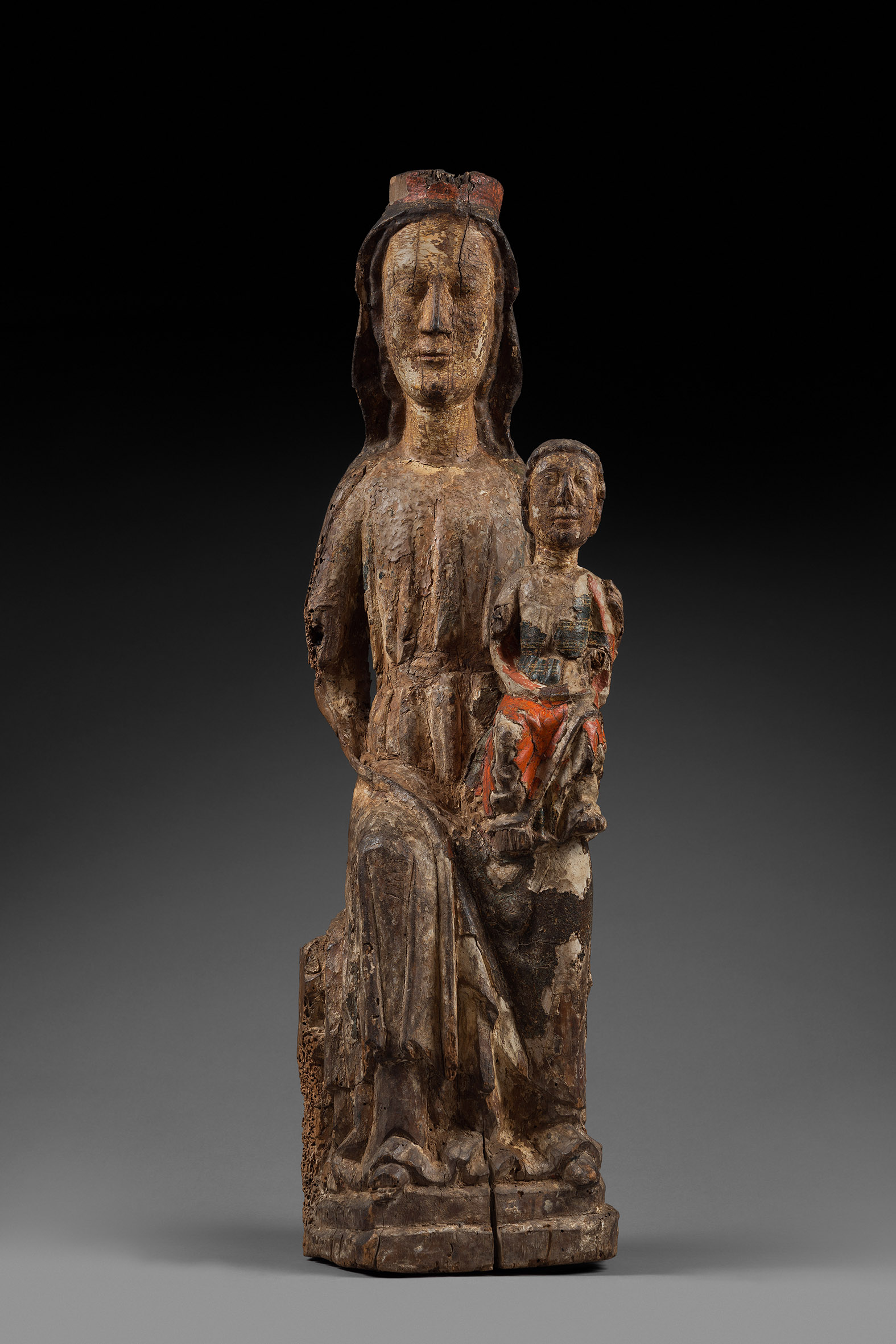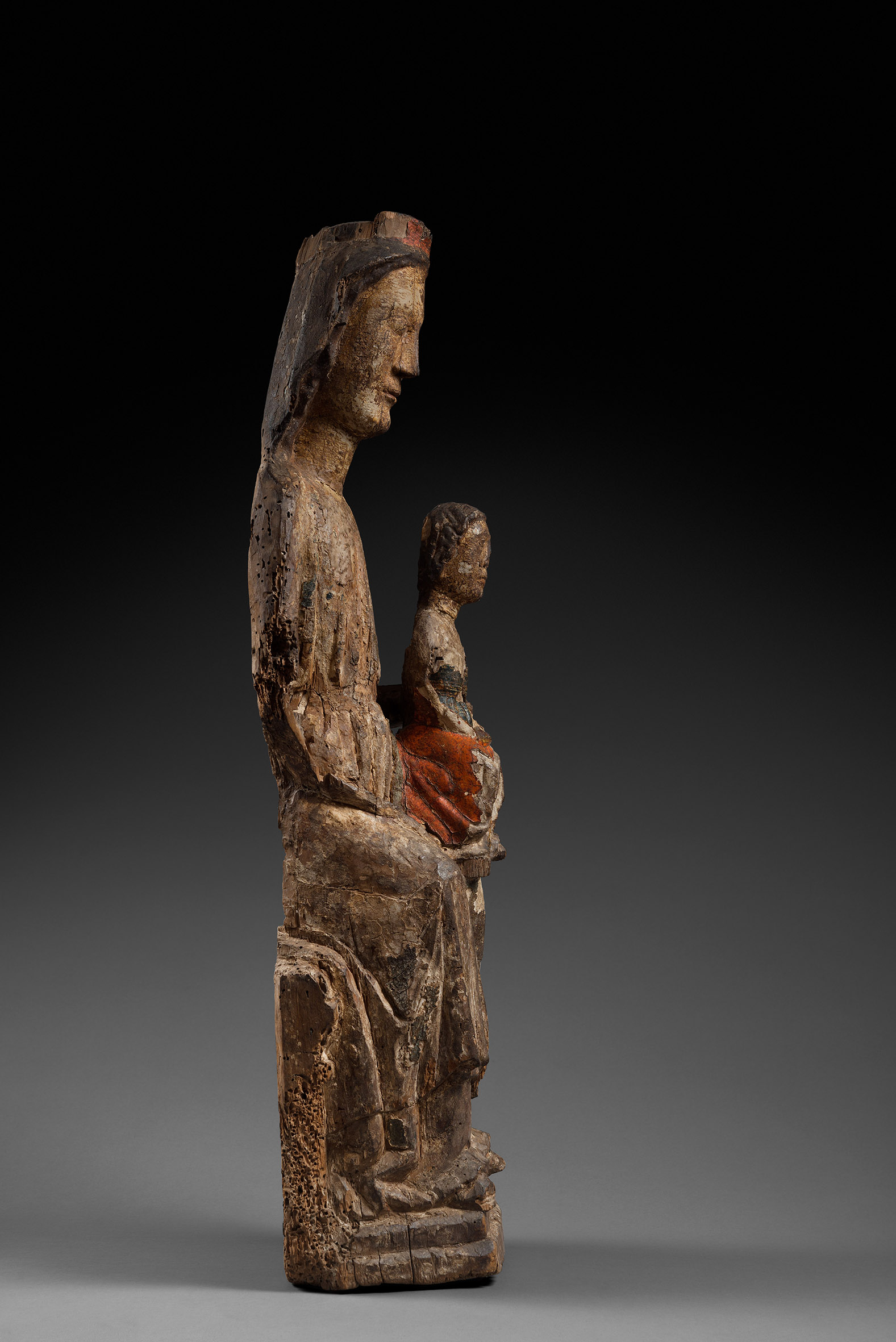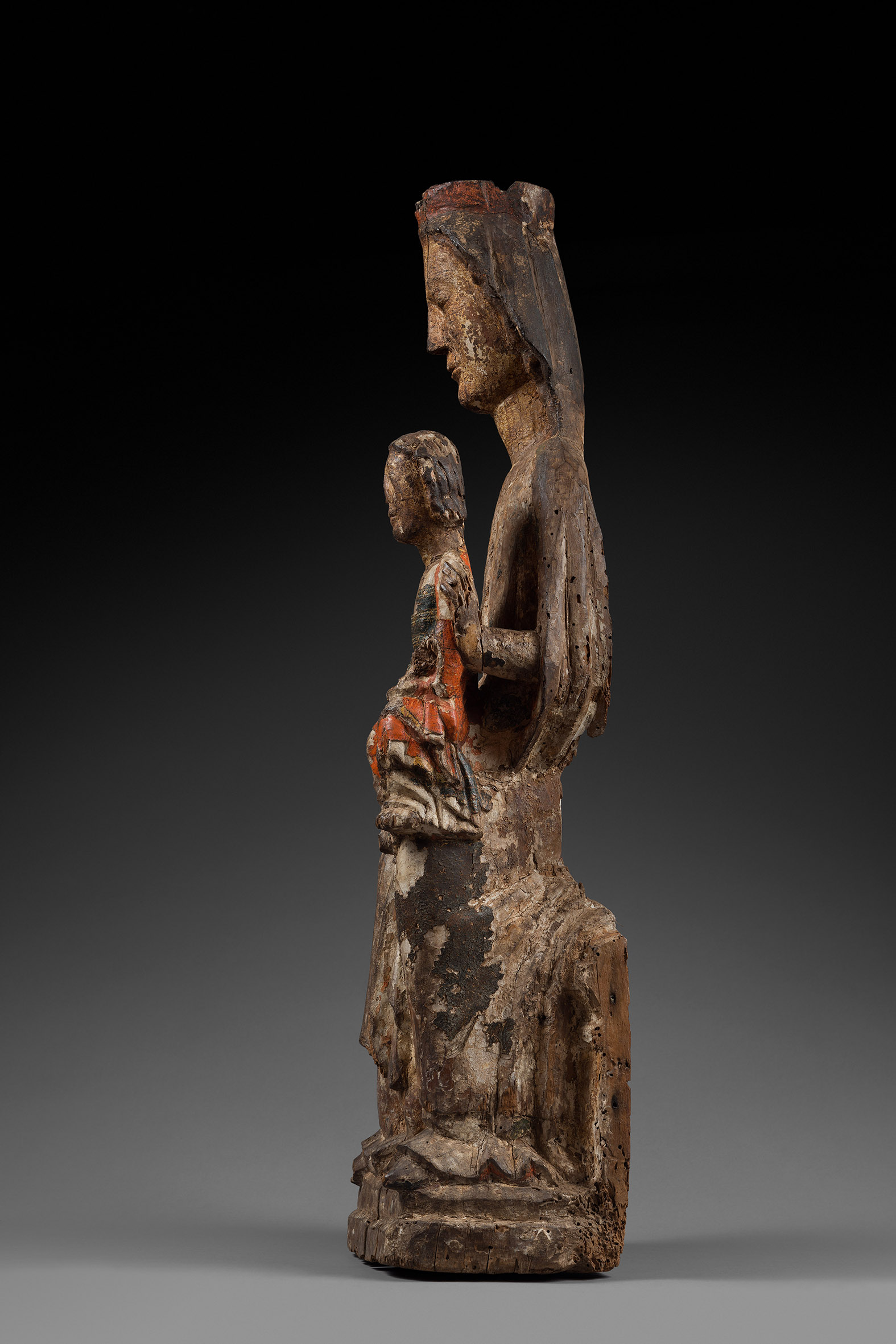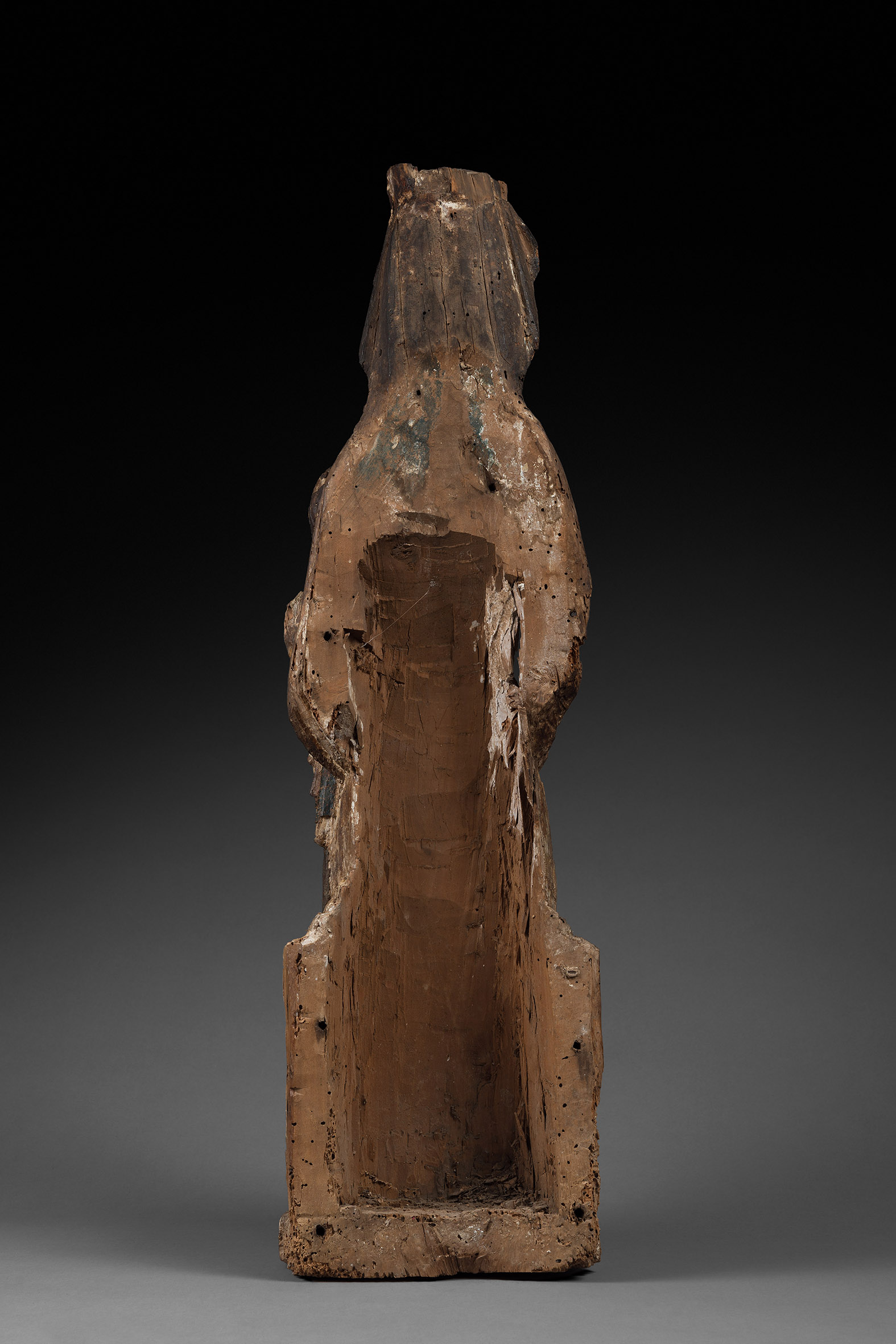Description
During the 12th century, the Virgin Mary appears in churches sitting majestically and used as throne by her son. She is called Sedes Sapientiae meaning Seat of Holy Wisdom.
She is then depicted only for her role as Theotokos the mother of God. This function has been proclamed during the Council of Ephesus in 431 when Christ was declared to have been born God.
The figure of the Virgin and Child enthroned was an iconographical theme particularly in vogue during the Middle-Ages. Thanks to pilgrimages this model was depicted evrywhere in Europe : France, Germany, Belgium, Scandinavian countries, England, Italy or Spain.
The Virgin is seating on a throne and presents the Christ Child with her left hand. He is seating frontally, resting on her left knee.
The Virgin wears supple garments, a belted dress with a round neckline and a cloak falling over her right knee in vertical pleats.
Her crowned head shows fine features, a straight nose, a small mouth and a short veil up on her forehead cast backwards.
Jesus is wearing a red cloak over a long tunic from which appear his feet.
The position of the child is not as hieratic and frontal than during the early 12th century nevertheless his face stays oriented towards worshippers. Moreover, from the 13th century onwards the Christ Child will seat sideways.
The similarity between the faces of the Virgin and the Christ Child shows that He really is the progeny of Mary. We can notice the likeness in the profiles and the gazes. The appearance of a middle aged man given to the Christ Child has to express Jesus existed even before his birth from Mary.
All of those characteristics allow us to locate this Virgin and Child in the North of Spain. This sculpture exhibits the diverse influences that the Spanish art received during the early 13th century. Indeed it is with the pilgrims of Santiago de Compostella, bringing with them influences from French Languedoc, Auvergnes and Ile-de-France that the cult of Mary flourished in Spain since the 8th century.
This Spanish Virgin and Child is a fine testimony of the Spanish 13th century art.
Literature
Jacqueline Boccador, Edouard Bresset, Statuaire médiévale de collection, tome I, Les clefs du temps, 1972
Ilene H. Forsyth, The Throne of Wisdom : Wood sculptures of the Madonna in Romanesque France, Princeton University Press, 1972
Galienne Francastel, Le droit au trône, un problème de prééminence dans l’art chrétien d’Occident du IVe au XIIe s, Paris, Klincksieck, 1973




